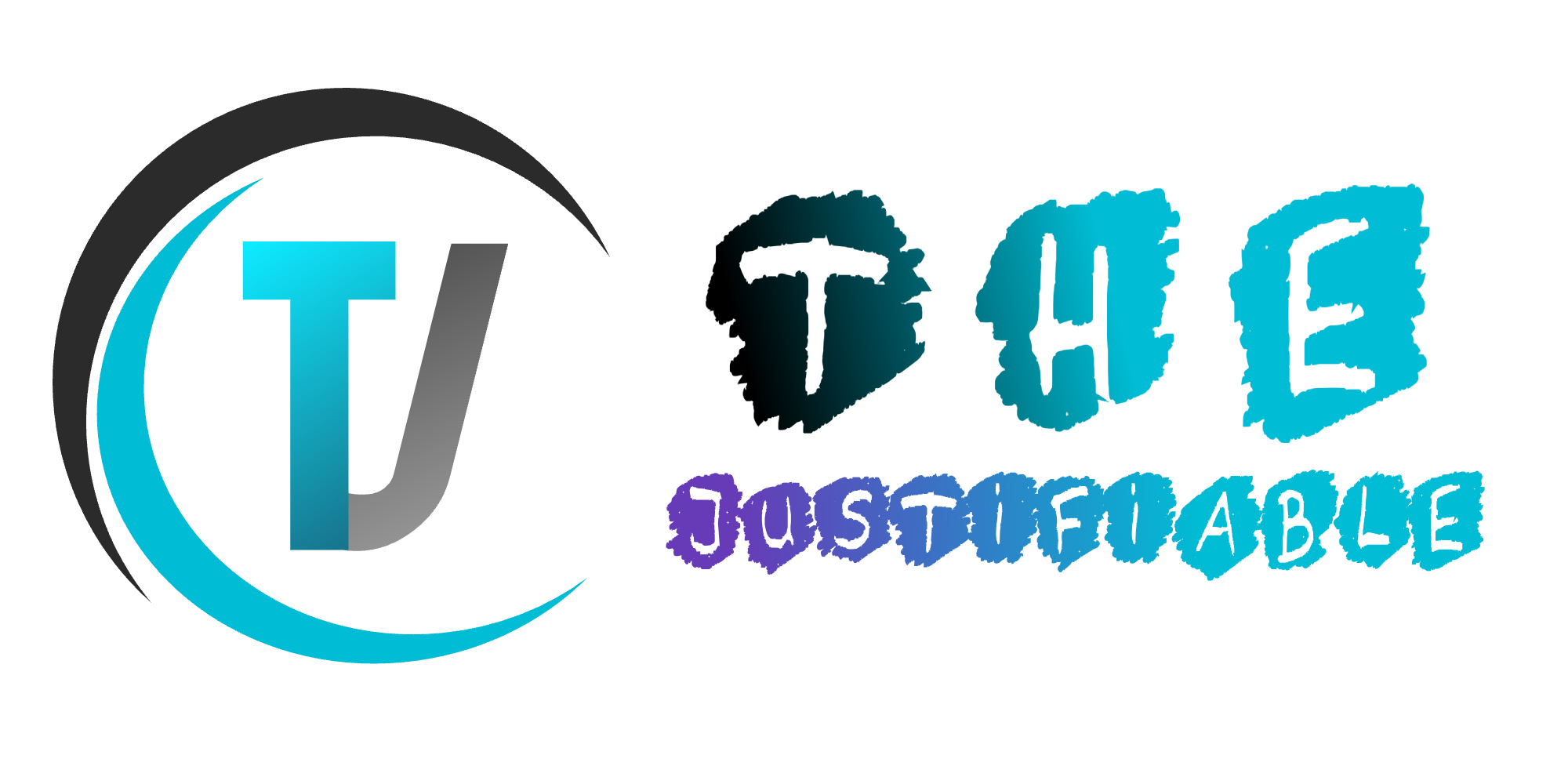Table of Contents
Personal financial planning is the difference between hoping you’ll build wealth and actually having a strategy to get there. Do you ever feel like your money disappears too quickly? Or wonder why some people seem to grow their savings faster even if they earn the same as you?
That’s where financial planning changes the game. In this article, we’ll break down how a clear plan not only helps you manage your money but accelerates your path to wealth.
Why Personal Financial Planning Builds Wealth Faster
When you don’t have a plan, money tends to vanish into daily expenses without leaving much behind. Personal financial planning gives your money a purpose and makes wealth-building a predictable process instead of a lucky accident.
Understanding The Power Of Goal-Driven Planning
Think about how you approach fitness. If you simply say, “I want to get healthier,” progress is fuzzy. But if you set a goal like running a 5K in six months, suddenly your workouts have direction. Money works the same way. Clear goals—like saving $20,000 for a home down payment or retiring with $1 million—anchor your decisions.
When you define those targets, you can map backward: how much you need monthly, what returns your investments must achieve, and where to cut unnecessary spending. Without these benchmarks, it’s easy to drift financially, even with a decent income.
From my own experience, I’ve found that even writing down goals on paper changes behavior. Seeing the target every day keeps you accountable, and it makes the trade-offs—skipping takeout or holding off on impulse buys—worth it because you can connect them to something tangible.
How Planning Turns Income Into Long-Term Assets
Here’s the trap most people fall into: income equals lifestyle upgrades. You get a raise, and instead of saving or investing, the new money goes toward a bigger car payment or fancier vacations. Planning disrupts that cycle by assigning extra income to wealth-building first.
For example:
- A $200 monthly raise could pay off debt two years sooner.
- Redirecting that same $200 into an investment account earning 7% annually could grow to nearly $24,000 in 10 years.
The numbers show why planning matters—it transforms money that might have been spent on fleeting purchases into assets that generate even more money.
Aligning Daily Habits With Bigger Wealth Goals
The real magic of financial planning is how it reshapes small daily habits. Grabbing coffee out every morning feels harmless until you see it adds up to $120 a month—money that could instead cover an index fund contribution.
This doesn’t mean cutting every joy. It means making conscious swaps that align with the bigger picture. I like to think of it as “value-based spending”: deciding if that expense is really worth slowing down a larger dream.
When your habits match your goals, wealth-building speeds up naturally because you’re not constantly sabotaging yourself with small leaks.
Creating A Solid Budget That Actually Works
A budget is not about restriction—it’s about freedom. When you know where your money is going, you can spend confidently without guilt and save consistently without stress.
Tracking Every Dollar To Gain Control
The first step is brutal but necessary: tracking. For at least one month, document every single dollar. Use apps like YNAB or Mint, or just a spreadsheet. The point is awareness.
You might discover surprising leaks—subscriptions you forgot about, impulse online purchases, or convenience food costs. Once you see where your money goes, you gain the power to redirect it.
I suggest labeling each category into three buckets: needs, wants, and goals. Needs keep life running, wants add enjoyment, and goals move you forward. This simple breakdown makes it obvious where to trim.
Setting Spending Limits That Support Growth
Once you have the data, set limits that match your goals. For instance:
- Housing: 30% of income or less.
- Debt repayment/savings: 20–30%.
- Lifestyle spending (food, entertainment, extras): the remainder.
These percentages aren’t rigid rules, but they give structure. A budget only “works” if it’s sustainable—so if you love dining out, factor it in instead of pretending you won’t spend there. The trick is setting a cap and sticking to it.
I’ve found that automating bill payments and savings is the easiest way to stay on track. If you don’t see the money sitting in your checking account, you’re less tempted to overspend.
Balancing Enjoyment With Long-Term Savings
Here’s the truth: if a budget feels like punishment, you’ll abandon it. That’s why building in fun money is critical. Maybe it’s 5–10% of income that you spend guilt-free on travel, hobbies, or even that daily latte.
This balance prevents burnout and makes the plan sustainable for decades, not weeks. Think of it as training for a marathon, not a sprint. A realistic budget creates consistency, and consistency is where compounding wealth really takes off.
Paying Off Debt As A Wealth-Building Strategy
Debt isn’t just a financial burden—it’s a time thief. Every month you’re paying interest, you’re delaying the money you could be investing toward your future.
Why High-Interest Debt Slows Wealth Growth
Take credit cards, for example. An average rate of 20% means a $5,000 balance costs $1,000 a year just in interest if unpaid. That’s money evaporating, never working for you.
Compare that to investing. If your investments earn 7% annually but your credit card charges 20%, you’re losing ground even if you’re putting money into the market. Eliminating high-interest debt is like giving yourself an instant, risk-free return.
Proven Methods To Tackle Debt Strategically
There are two popular strategies:
- Debt Snowball – Pay off the smallest debt first for momentum, then roll those payments into the next. It’s psychological fuel.
- Debt Avalanche – Pay off the debt with the highest interest rate first, minimizing total interest paid. It’s mathematically efficient.
I usually recommend choosing based on personality. If you need quick wins to stay motivated, snowball works wonders. If you’re disciplined and driven by numbers, avalanche saves you more long-term.
Automating payments above the minimum is another smart move. Even an extra $50 a month chips away at debt much faster than you’d think.
Turning Debt Payments Into Future Investments
Here’s the exciting part: once a debt is gone, the money you were throwing at it can be redirected into building wealth. If you were paying $300 a month toward student loans, imagine flipping that into an index fund contribution.
Over 20 years at 7% growth, that single redirected payment could grow into more than $150,000. That’s why I view debt repayment not as an end goal but as the foundation for future investing. It’s like clearing the runway before your financial plane can take off.
Saving With Purpose And Building An Emergency Fund
Saving is more than stacking cash in a bank account. It’s about creating safety nets and growth buckets that keep you moving forward without setbacks. Purpose-driven saving ensures your money is working for you instead of just sitting idle.
How An Emergency Fund Protects Wealth Growth
Picture this: your car breaks down, or you get hit with an unexpected medical bill. Without an emergency fund, you might swipe a credit card with a 20% interest rate. That one setback can undo months—sometimes years—of financial progress.
An emergency fund is your financial shock absorber. Most experts recommend 3–6 months of living expenses, but I’d say start with a simple $1,000 target first. Hitting that milestone builds momentum and confidence.
Here’s the key: Keep it in a high-yield savings account, separate from your everyday checking. It should be easy to access in a crisis but not so convenient that you dip into it for pizza night. Think of it as your “do not touch unless absolutely necessary” fund.
Automating Savings To Stay Consistent
Consistency is everything in saving. Manually transferring money each month is like relying on willpower to hit the gym—you’ll skip it eventually. Automation takes discipline out of the equation.
Set up an automatic transfer right after payday. Even $50 or $100 automatically moved into savings adds up over time. Most banking apps let you schedule recurring transfers in minutes.
What I love about automation is how invisible it feels. You adjust to living on what remains, and your savings grow in the background without daily effort. It’s like putting your financial health on autopilot.
Separating Short-Term And Long-Term Saving Goals
Not all savings serve the same purpose. Mixing them together creates confusion and frustration. I recommend creating buckets:
- Short-term savings: Vacations, car repairs, or home upgrades.
- Long-term savings: House down payment, college fund, or early retirement goals.
Use separate accounts—or sub-accounts if your bank allows it. Some apps, like Ally Bank or Capital One 360, let you name each goal (“Hawaii Trip 2025” or “Future House”). It keeps motivation high because you’re not just “saving money”—you’re funding a dream.
Investing Wisely To Grow Money Over Time
Saving protects you, but investing multiplies your money. It’s where you shift from just holding wealth to actively building it faster than inflation eats away at it.
The Role Of Compounding In Wealth Accumulation
Albert Einstein supposedly called compounding the “eighth wonder of the world.” Whether he actually said it or not, the math backs it up. Compounding is simply earning interest on your interest, snowballing your wealth over time.
Let’s say you invest $500 a month at a 7% average annual return. In 10 years, you’ll have about $86,000. In 20 years? $260,000. In 30 years? Over $566,000. The money you personally contributed is only $180,000—the rest is growth from compounding.
The earlier you start, the more compounding works in your favor. Waiting even five years can cost you hundreds of thousands down the line.
Choosing The Right Investment Vehicles For Goals
Investing isn’t one-size-fits-all. The right vehicle depends on your timeline and risk tolerance.
- Stocks/ETFs (exchange-traded funds): Great for long-term growth. A diversified S&P 500 index fund is a simple, effective option.
- Bonds: Lower risk, steady income. Good for balancing out aggressive stock-heavy portfolios.
- Real estate: Offers income through rent and potential appreciation. Requires more upfront effort and management.
- Tax-advantaged accounts (401k, IRA, Roth IRA): Best for retirement since your growth compounds tax-free or tax-deferred.
I suggest starting with broad, low-cost index funds before diving into complex investments. They’re easy to manage, low risk compared to stock picking, and historically reliable for long-term growth.
Managing Risk While Still Growing Wealth
Risk is inevitable in investing—you can’t avoid it, but you can manage it. The trick is balancing potential returns with your ability to stomach market swings.
A simple rule: The longer your timeline, the more risk you can take. If retirement is 30 years away, a portfolio heavy in stocks makes sense. If you’ll need the money in 5 years for a house, stick to safer investments like bonds or savings.
Rebalancing once a year is another overlooked step. Let’s say your portfolio drifts from 70% stocks and 30% bonds to 85/15 after a market rally. Rebalancing brings it back to your chosen allocation, reducing exposure to unwanted risk.
Using Retirement Planning To Accelerate Wealth
Retirement may feel far off, but planning now is the difference between freedom and stress later. Personal financial planning here isn’t just about survival—it’s about designing the lifestyle you want decades from now.
Why Early Retirement Planning Pays Off
The earlier you start, the less heavy lifting you have to do. For example, if you start saving $500 a month at age 25, earning 7% annually, you’ll hit over $1.2 million by 65. If you wait until 35 to start? You’d only have about $566,000. That’s the brutal math of lost compounding time.
Early planning also gives you flexibility. Maybe you want to retire at 55 instead of 65, or work part-time in your 50s. Starting early makes those options realistic instead of wishful thinking.
Maximizing 401(k), IRA, Or Other Retirement Accounts
Employer-sponsored 401(k) plans are often the best place to start, especially if your employer matches contributions. That match is essentially free money—you should grab it every time.
Beyond that, IRAs (Individual Retirement Accounts) give more flexibility. A Roth IRA, in particular, is powerful because your money grows tax-free and withdrawals in retirement are also tax-free. Imagine not owing a dime of tax on decades of compounding growth—that’s huge.
If you’re self-employed, accounts like a SEP IRA or Solo 401(k) can give you the same advantages as traditional workplace plans.
I recommend setting contributions on autopilot, increasing them slightly whenever you get a raise. You won’t miss the money, but your retirement account will thank you later.
Balancing Retirement Contributions With Other Goals
Retirement is important, but it’s not the only financial goal. Maybe you’re also saving for a home, kids’ education, or building an emergency fund. The balance can feel tricky.
A simple guideline I suggest is:
- Cover your emergency fund first.
- Contribute enough to your 401(k) to get the employer match.
- Pay down high-interest debt.
- Increase retirement contributions steadily as other goals stabilize.
This way you’re not neglecting your future, but you’re also not jeopardizing short-term stability. Think of it like juggling—you keep the most fragile ball (retirement) in the air while still catching the others.
Protecting Wealth Through Insurance And Risk Management
Building wealth isn’t only about earning and investing—it’s also about protecting what you’ve worked for. Insurance acts as a financial shield, making sure one unexpected event doesn’t derail years of progress.
How Insurance Prevents Financial Setbacks
Imagine saving diligently for five years, only to face a $50,000 hospital bill after an accident. Without health insurance, that single expense could wipe out your savings. Insurance doesn’t eliminate risks, but it transfers the financial burden away from you.
Think of it like this: Your emergency fund handles small shocks, but insurance covers the disasters that would otherwise devastate your finances. Health, auto, home, and life insurance all play different roles in keeping your wealth-building journey steady.
Choosing Coverage That Matches Your Lifestyle
The right insurance depends on your stage of life. If you’re single with no dependents, life insurance may not be urgent. But if you have a family relying on your income, it becomes essential.
Here’s how I suggest thinking about it:
- Health insurance: Non-negotiable. Medical bills are one of the top reasons people fall into debt.
- Auto insurance: Required if you drive, but consider full coverage if your car isn’t easily replaceable.
- Homeowners/renters insurance: Protects not just your property but also liability if someone gets injured.
- Life insurance: Key if others depend on your income. Term life is often the most cost-effective.
- Disability insurance: Often overlooked, but your ability to earn is your biggest asset.
The goal is balance: enough coverage to prevent catastrophe, but not over-insuring and draining your budget.
Planning For Unexpected Life Changes
Life doesn’t stay still—marriage, kids, buying a home, or even starting a business all shift your insurance needs. I recommend reviewing your coverage annually or whenever a big change happens.
For example, when my friend had his first child, he bumped his life insurance from $250,000 to $1 million to ensure his family would be covered. It’s not about fear—it’s about peace of mind knowing your financial plan won’t collapse if life throws a curveball.
Tax Planning To Keep More Of What You Earn
Taxes are one of the biggest drains on wealth if you don’t plan ahead. Smart tax strategies let you keep more of your hard-earned money, which accelerates saving and investing.
Using Tax-Advantaged Accounts Effectively
Retirement accounts like 401(k)s, IRAs, and Roth IRAs aren’t just for the future—they’re tax tools today. A 401(k) lowers your taxable income now, while a Roth IRA grows tax-free for later.
For instance, contributing $6,500 annually to a Roth IRA over 30 years could leave you with over $600,000 completely tax-free. That’s the power of planning with the right accounts.
If your employer offers a Health Savings Account (HSA), don’t overlook it. It’s triple tax-advantaged: contributions reduce taxable income, growth is tax-free, and qualified medical withdrawals are tax-free. That’s rare.
Strategic Deductions And Credits That Boost Savings
Deductions reduce taxable income, while credits directly reduce taxes owed. Both matter, but credits often save you more dollar-for-dollar.
Some worth paying attention to:
- Child Tax Credit if you have kids.
- American Opportunity Credit if you’re paying for college.
- Energy-efficient home improvement credits.
Keeping good records and tracking receipts can uncover thousands in savings. I suggest using tax software or a CPA once your finances get more complex—it’s often worth more than the cost.
Planning Income And Investments For Lower Taxes
Taxes also hit your investments, but you can plan around them. For example:
- Hold investments for over a year to qualify for lower long-term capital gains tax rates.
- Use tax-loss harvesting (selling underperforming investments to offset gains) to minimize your bill.
- Place income-producing assets in tax-deferred accounts and growth-focused assets in taxable accounts for efficiency.
Think of it this way: the less you hand over to the IRS, the more you keep compounding for yourself.
Leveraging Professional Guidance When Needed
Personal financial planning doesn’t mean you have to do everything alone. Sometimes the smartest move is knowing when to bring in professional help.
When To Work With A Financial Advisor
If your finances are straightforward, you might not need one right away. But once you’re juggling investments, retirement accounts, taxes, and estate planning, the complexity can get overwhelming.
I’d suggest meeting with an advisor if:
- You’ve crossed into six-figure investments.
- You’re approaching retirement.
- You’ve had a major life change (marriage, inheritance, business sale).
Even a one-time consultation can bring clarity and prevent costly mistakes.
Benefits Of A Personalized Wealth-Building Plan
An advisor tailors strategies to your specific situation. For instance, they can show you how to optimize retirement contributions while still saving for a child’s college. Or they might recommend rebalancing your portfolio in a way you wouldn’t have considered.
The real value is perspective. We all have blind spots with our own money, and an outside expert can spot things you miss.
Avoiding Common Pitfalls Without Expert Help
That said, be careful. Not every “advisor” is a fiduciary, meaning they may push products that benefit them more than you. I recommend working only with fee-only fiduciary advisors—you pay them for advice, not commissions.
If you’re not ready for an advisor, at least educate yourself through trusted books, podcasts, and online communities. Even a little knowledge helps you avoid scams and make smarter choices.
Staying Consistent And Adjusting As Life Changes
Wealth-building isn’t about perfection—it’s about consistency. Life evolves, and your financial plan should evolve with it.
Reviewing Your Plan To Stay On Track
I advise setting a recurring “money date” once a quarter. Review your budget, savings progress, and investment accounts. Are you hitting your goals? Did spending creep up? Small adjustments here prevent big problems later.
Think of it like a GPS recalculating your route. Even if you veer slightly off course, checking in ensures you still arrive at the destination.
Adapting Goals As Your Income Grows
As your income rises, lifestyle creep is a real danger. Without a plan, that raise disappears into nicer cars and bigger apartments. Instead, I suggest a 50/50 rule: save or invest half of any raise and enjoy the other half.
This way, your quality of life improves without sacrificing long-term progress. It’s a simple system that keeps both your present and future self happy.
Using Life Events As Opportunities To Refocus
Major life events—marriage, kids, divorce, career shifts—are natural checkpoints. Each one changes your financial priorities, so your plan needs updating too.
For example, when you buy a home, your emergency fund might need to increase. When you have a child, life insurance becomes non-negotiable. These aren’t setbacks—they’re opportunities to realign your financial plan with your new reality.
Consistency plus flexibility is the winning formula. The more you practice it, the faster wealth builds without you feeling like you’re constantly sacrificing.






